GrabCAD
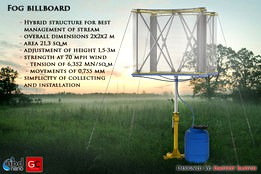
Fog billboard + calculations
by GrabCAD
Last crawled date: 1 year, 10 months ago
During developing this project the main aim was to provide reliable and effective work of Fog Billboard (FB) at any weather conditions and without interference of specialists as for its adjusting and repair. F.B. will be maximally effective and reliable at minimal cost and minimal time for its construction. Maximally effective use is 1 m3 of space.
I hope I’ve managed to do it.
And I hope you will appreciate it.
Fog Billboard is a hybrid structure of net which includes all advantages of cylindrical and cubic methods of stretching net. FB consists of a small collector of fog, overall dimensions 2x2x2m. There is metal net (21.3 m2) outside the collector. Thanks to concave system of a stretch it most effectively directs a stream of damp air on net, at any speed of wind and its direction, it doesn’t need rotary mechanism. The frame with ease can stand direct wind 70 mph, with the maximum tension 6MN/sq.m. 0.7 mm shifting is possible. The system can be adjusted within 1.5m - 3m over the level of land. FB weighs 177 kg. The structure can be assembled with the only key S22.
At first I decided to see how fog behaves passing through usual net. Using much smaller copy of FB I simulated wind stream at a flat net. If air stream is direct the results of the experiment are excellent, but if the wind is angular the stream passed by. I also compared the areas of nets at dimensions 1x1x1m. If the area is flat, it has 1m2. This structure of net is very simple, but not very effective.
The next step was the space structures.
At cubic structure area is 4m2. At direct steam of wind, fog stream crossed through construction and contacted with net several times. But if the wind stream in cube center is angular there is stagnation area of air. It doesn’t give chance to normal passing of new damp air.
Cylindrical structure has smaller area of net (3.14 m2) and bigger streamlining. Fog doesn’t pass through the net, and flows round it rolling from edges. Therefore fog contacts with net once.
Later I decided to unite these 2 structures. The idea “Fog billboard” was born in such a way. At direct stream of air the main stream is directed by the structure to its corners. Part of fog settles there and the part of fog goes further to angular area, still the part of fog passed central and goes to rear area. At angular stream of air, which will be mainly present at real weather conditions, 90% of fog goes to net and several times contacts with the net (at “entrance” and “exit”) in such a way the best intake of moisture is reached. Inside the net the maximum circulation of damp air gives the best supply of new moisture. The area of this net is 4.4 m2.
Frame
Having chosen the structure of net, I came over to modeling of frame. As the basic bearing component I took the square aluminum shape of 40x4 mm from an alloy 5052-H38 or similar. I tested some cross-sections and stopped at the square variant (more at render). Characteristics of this material are similar to steel but it is nearly 3 times lighter. Calculation of frame strength was made considering coefficient of effective cross section of net k=0.25 and the weight of all additional “equipment” (see renders). The frame is fixed by screwing it with 4 screws into the land and fastening of the design base with nuts. The top angular points are fixed with cables. Different angles of wind give different tension, the maximum value 6 MN/m2 and 0.7 mm shifting. It don’t exceed material fluidity limit and has huge of safety. It is possible to tell for sure it will stand 11balls wind of the various directions and rushes.
Height adjustment
Adjustment of frame height is carried out with a jack using partly remade Hi-Lift system which is used in the jacks of the same name product from “High-Lift Jack Company”. The person swinging a handle 0.5 m length can raise the frame to the height 1.5m - 3m with 50 mm step. In contrast to the jack the remade system has mobile element – lath. The construction is fixed with removable bolt D24.
Net
The weight of net is about 30 kg. The net has flexible polymeric fringing with the sealed metal holes for fixing. At the top it is fixed with tension springs. They are responsible for a stretch of a net and partially decrease wind gust. At bottom it is fastened with corresponding hooks. The net goes beyond the lower fringing in order that the end of net was closer as possible to the bottom of a tube, it minimizes losses of water which flows down on the net to a collector.
Collecting of water
The system of water drainage consists of polymeric tubes. Water goes from four angular points with system 4 in 1. Then the drain hose can be brought to a tank-collector or directly to the house where water is necessary provided that the house is lower than the collector of fog. The hoses are fixed with clamps. I refused to use cap nuts – if such nut is damaged to replace it will be problematic, especially in those areas where there is no fresh water. To replace clamp is much simpler and cheaper. 4 pre filters are used in system They prevent flowing of foliage and dirt into hoses.
It seems to me that’s all!
Good luck to all!
I hope I’ve managed to do it.
And I hope you will appreciate it.
Fog Billboard is a hybrid structure of net which includes all advantages of cylindrical and cubic methods of stretching net. FB consists of a small collector of fog, overall dimensions 2x2x2m. There is metal net (21.3 m2) outside the collector. Thanks to concave system of a stretch it most effectively directs a stream of damp air on net, at any speed of wind and its direction, it doesn’t need rotary mechanism. The frame with ease can stand direct wind 70 mph, with the maximum tension 6MN/sq.m. 0.7 mm shifting is possible. The system can be adjusted within 1.5m - 3m over the level of land. FB weighs 177 kg. The structure can be assembled with the only key S22.
At first I decided to see how fog behaves passing through usual net. Using much smaller copy of FB I simulated wind stream at a flat net. If air stream is direct the results of the experiment are excellent, but if the wind is angular the stream passed by. I also compared the areas of nets at dimensions 1x1x1m. If the area is flat, it has 1m2. This structure of net is very simple, but not very effective.
The next step was the space structures.
At cubic structure area is 4m2. At direct steam of wind, fog stream crossed through construction and contacted with net several times. But if the wind stream in cube center is angular there is stagnation area of air. It doesn’t give chance to normal passing of new damp air.
Cylindrical structure has smaller area of net (3.14 m2) and bigger streamlining. Fog doesn’t pass through the net, and flows round it rolling from edges. Therefore fog contacts with net once.
Later I decided to unite these 2 structures. The idea “Fog billboard” was born in such a way. At direct stream of air the main stream is directed by the structure to its corners. Part of fog settles there and the part of fog goes further to angular area, still the part of fog passed central and goes to rear area. At angular stream of air, which will be mainly present at real weather conditions, 90% of fog goes to net and several times contacts with the net (at “entrance” and “exit”) in such a way the best intake of moisture is reached. Inside the net the maximum circulation of damp air gives the best supply of new moisture. The area of this net is 4.4 m2.
Frame
Having chosen the structure of net, I came over to modeling of frame. As the basic bearing component I took the square aluminum shape of 40x4 mm from an alloy 5052-H38 or similar. I tested some cross-sections and stopped at the square variant (more at render). Characteristics of this material are similar to steel but it is nearly 3 times lighter. Calculation of frame strength was made considering coefficient of effective cross section of net k=0.25 and the weight of all additional “equipment” (see renders). The frame is fixed by screwing it with 4 screws into the land and fastening of the design base with nuts. The top angular points are fixed with cables. Different angles of wind give different tension, the maximum value 6 MN/m2 and 0.7 mm shifting. It don’t exceed material fluidity limit and has huge of safety. It is possible to tell for sure it will stand 11balls wind of the various directions and rushes.
Height adjustment
Adjustment of frame height is carried out with a jack using partly remade Hi-Lift system which is used in the jacks of the same name product from “High-Lift Jack Company”. The person swinging a handle 0.5 m length can raise the frame to the height 1.5m - 3m with 50 mm step. In contrast to the jack the remade system has mobile element – lath. The construction is fixed with removable bolt D24.
Net
The weight of net is about 30 kg. The net has flexible polymeric fringing with the sealed metal holes for fixing. At the top it is fixed with tension springs. They are responsible for a stretch of a net and partially decrease wind gust. At bottom it is fastened with corresponding hooks. The net goes beyond the lower fringing in order that the end of net was closer as possible to the bottom of a tube, it minimizes losses of water which flows down on the net to a collector.
Collecting of water
The system of water drainage consists of polymeric tubes. Water goes from four angular points with system 4 in 1. Then the drain hose can be brought to a tank-collector or directly to the house where water is necessary provided that the house is lower than the collector of fog. The hoses are fixed with clamps. I refused to use cap nuts – if such nut is damaged to replace it will be problematic, especially in those areas where there is no fresh water. To replace clamp is much simpler and cheaper. 4 pre filters are used in system They prevent flowing of foliage and dirt into hoses.
It seems to me that’s all!
Good luck to all!
Similar models
grabcad
free

Fresh Water Fog Net Collector (Fixed type)
...rts and it's modular.
it can be rotated on the desired wind direction cause of the flanged type plate that can easily adjust.
grabcad
free

Fresh Water Fog Net Collector Structure
...se aluminum t-slot as the frame because of the light weight and strength.
all components from minitec, so no machining required.
grabcad
free

Compact Fog net Mesh Collector
...a minimum of cost and time to build.
challenge result : https://grabcad.com/challenges/the-fresh-water-fog-nets-challenge/results
grabcad
free

Fog/dew collector
...ate some type of energy to pump water to other places like to a home. so this way someone does not have to come up and get water.
grabcad
free

Water fog net slim frame
...water fog net slim frame
grabcad
water fog net slim frame
grabcad
free

First sketch water fog net frame
...first sketch water fog net frame
grabcad
first sketch water fog net frame
grabcad
free

wind facing Fog net
...wind facing fog net
grabcad
system shaped to face the wwind and allow a good water flow
grabcad
free

Modular Fog net
...net
grabcad
a 1m² fog net designed to be easily interconnected, allowing to increase the working surface of the water collector.
grabcad
free

Challenge: The Fresh Water Fog Nets Collector
...the problem is that i saw the challenge today and did not have time to add some final details.
i hope that you like my design!!!
grabcad
free

Mistcatcher net
...d catches the maximum mist in air. it can be thrusted into the ground and resists strong wind, collects water when it rains also.
Billboard
3d_export
$15

Animated Rotating Billboard 3D Model
...
ad ads advertising billboard board promote promoting poster rotate
animated rotating billboard 3d model coolerinc 71821 3dexport
3d_export
$30

Willow Tree CGAXIS 16 3D Model
...deciduous forest park trunk branch leaves leaf plant outdoor billboard green architectural interior exterior gardening realistic nature cgaxis vray...
3d_ocean
$9

Billboard
...asulov v-ray vray
animated billboard (978 polygons) created with 3ds max 2011 include materials, textures, images render vray 2.0
3ddd
$1

Билборд CNews малый вертикальный
...билборд cnews малый вертикальный 3ddd billboard , citylight , cnews , билборд , реклама ,...
archive3d
free
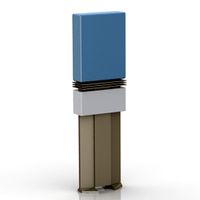
Billboard 3D Model
...vertisement hoarding
billboard n060712 - 3d model (*.gsm+*.3ds) for exterior 3d visualization.
archive3d
free
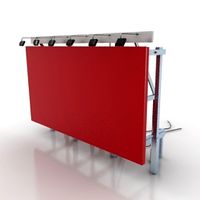
Banner 3D Model
...banner 3d model archive3d billboard advertisement hoarding banner banner n180808 - 3d model (*.gsm+*.3ds)...
3d_ocean
$12

Cinema 4d Billboard Advertising
...ise your own banner in the virtual world through this high quality beautiful c4d 3d model! you can add any image easily in the...
3d_ocean
$5

Fantasy Grass billboard pack
...billboard pack to use in real time application. handpainted style 256×256 lossless png with alpha transparency hope you like it !
3d_ocean
$18

Branches & Leaves Billboard pack
...billboard pack to use in real time application. handpainted style 256×256 lossless png with alpha transparency hope you like it !
3d_ocean
$18

ThinGrass billboard pack
...zed texture
useful billboard pack to use in real time application. handpainted style 256×256 lossless png with alpha transparency
Fog
3ddd
$1
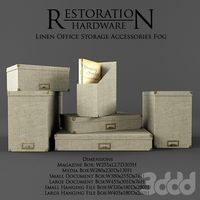
Restoration Hardware/Linen Office Storage Accessories Fog
...х76h
small hanging file box:w330х180dх280h
large hanging file box:w405х180dх280h
в архиве присутствует 2010, 2012 версий 3ds max
3d_ocean
$9

Cloudy Sun V1
...sun v1 3docean blue clouds cloudy day dramatic exr fog hdri highres moody morning panorama sky sun sunrise sunset...
3ddd
$1

RH/ LINEN OFFICE STORAGE ACCESSORIES FOG
...английском языке. сцена без мусора и коллизий.
для правильного отображения текстур потребуется color correct! приятного рендера.
3ddd
$1

Vintage Poison Bottles
...бутылка винтажные стеклянные бутыли. затемнённость стекла можете ругулировать параметром fog ...
3d_ocean
$15
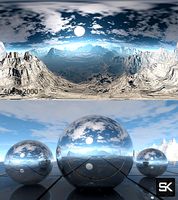
Sunrise in mountains.3
...sunrise in mountains.3 3docean clouds day fog hdri morning mountains rocks sky stones sun sunrise hdri...
3d_ocean
$15
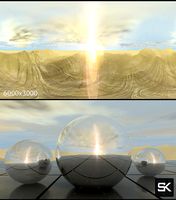
Sunrise In The Desert.2
...sunrise in the desert.2 3docean clouds day desert dunes fog hdri morning mountains rocks sand sand dunes sky stones...
3d_ocean
$15

Sunrise On The Sea
...sunrise on the sea 3docean clouds day fog hdri morning mountains rocks sea sky stones sun sunrise...
3d_ocean
$15

Sunset At Sea
...sunset at sea 3docean clouds day fog hdri morning mountains rocks sea sky stones sun sunrise...
3d_ocean
$15

Dawn.
...dawn. 3docean clouds day desert dunes fog hdri morning mountains rocks sand sand dunes sky stones...
3d_ocean
$15

Dawn.2
...dawn.2 3docean clouds day fog hdri morning mountains rocks sea sky stones sun sunrise...
Calculations
cg_studio
$29

Calculator3d model
... model
cgstudio
.3ds .c4d .dae .fbx .obj - calculator 3d model, royalty free license available, instant download after purchase.
3d_ocean
$29

100 Mono Icons Mixed Pack
...ns and 34.115 points, calculated in cinema 4d r15. render system and materials are ready. c4d and other file formats not smoot...
3d_ocean
$15

Office Supplies Pack
...e dispenser eraser markers office paper pencils pens scissors stapler supplies tape tools work
pack of different office supplies.
3d_ocean
$12

Casio Scientific Calculator
...ginaly modeled in rhino4 3d and rendered with vray. in the package are included high resolution textures, making this model id...
3d_ocean
$5

Abacus
...old realistic school table teetch
abacus classic created with cinema 4d r15 formats included: max 2013 – fbx 2012 – c4d r15 – obj
3d_ocean
$7

Infographics 3D Models in 3 Styles Part 3
...t for you. please check video and item support tab for usage. the file has 18401 polygons and 16877 points, calculated in cine...
3d_ocean
$6

Calculator
...ted in cinema 4d with vray. all needed materials and images included in the download file. also there is two format included (...
3d_ocean
$7

Infographics 3D Models in 2 Styles
...t for you. please check video for usage. the file has 5994 polygons and 5866 points, calculated in cinema 4d r15. render syste...
3d_ocean
$19

3D Gears Human Head Shaped
...cle styles. the file has total 115.939 polygons and 112.320 points, calculated in cinema 4d r15. render system and materials a...
3d_ocean
$6

Infographics 3D Models in 2 Styles Part 2
...t for you. please check video and item support tab for usage. the file has 15524 polygons and 14489 points, calculated in cine...
